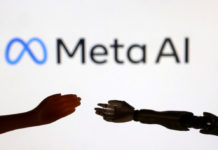A report on ‘Trends of Poverty and Inequality’ in Ghana has revealed that based on 2017 population projections, a total of 6.8 million people were captured as poor and, therefore, could not afford to spend GHS4.82 per day in 2016/17.
It stated that 2.4 million people were extremely poor (8.2 per cent), and that putting all their expenditure together, they could not afford to spend GHS2.69 per day in 2016/17 on food (GHS982.1 per year).
The report by the Ghana Statistical Service (GSS) Ghana living Standards Survey Round 7, on Ghana’s Poverty Profile, sought to provide information on household consumption and expenditure; data for the estimation of poverty and inequality indices at the national and sub-national levels; and data on employment and labour underutilisation.
ALSO: COPEC calls for dialogue on escalating fuel prices
It was also to provide information on health, education, asset ownership and access to services.
Poverty trends
The report revealed that poverty remained a rural phenomenon with rural savannah still ranking highest in poverty rates among the ecological zones and it was the only zone that experienced increases in poverty rates in 2016/17.
In all, five regions experienced poverty declines; Northern and Upper East experienced significant increases in poverty rates, while Greater Accra had the least poverty rate, and Upper West remained the region with the highest poverty rate.
“The three northern regions contribute more than 40 per cent to national poverty. In Ghana, growth has remained the engine of poverty reduction. In the absence of inequality, poverty reduction will have been larger,” it stated.
READ: Why we are dragging Mahama, Julius Debrah to Amidu – Centre For National Affairs explains
Employment status
According to the report, households headed by farmers remained the poorest in Ghana and declined among the ones with heads engaged as self-employed (non-agric).
UNDP report
A United Nations Development Programme (UNDP) on Northern Ghana Human Development Report, launched last month, explored the development challenges and opportunities in the north and offered suggestions for poverty reduction in the zone.
READ ALSO: Market women now using dollar rate to price goods – Allotey Jacobs asserts
Known as “Bridging the Poverty Gap and Fostering Socio-Economic Transformation for All”, it revealed that the region required more efforts to transform the zone for the country to achieve the Sustainable Development Goals (SDGs), especially, SDG1, which aims at eradicating poverty in all forms everywhere.


![Ghana discover WAFU Zone B U17 Championship group [Full Group]](https://www.adomonline.com/wp-content/uploads/2024/04/WhatsApp-Image-2023-04-14-at-10.39.33-AM-218x150.jpeg)




